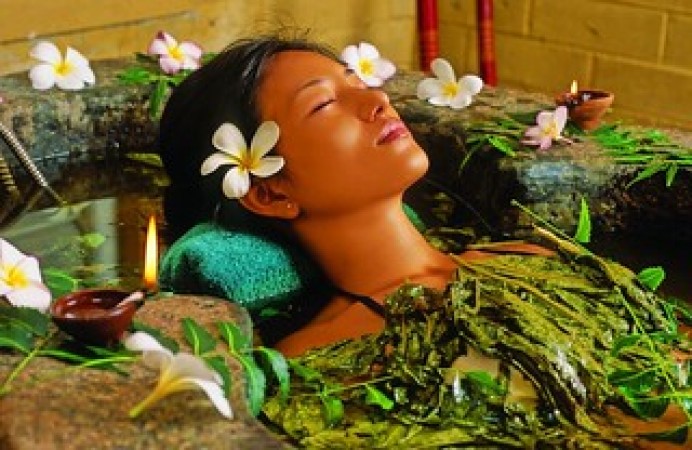
Ayurveda, an ancient Indian system of medicine, places great importance on daily routines, including the practice of bathing. Bathing in accordance with Ayurvedic principles can have a significant impact on physical, mental, and spiritual well-being. Let's explore when and how to bathe according to Ayurveda.
Bathing in Ayurveda is not merely about cleanliness; it's a holistic practice aimed at promoting health and balance. It's believed to cleanse the body of toxins, balance doshas (bioenergetic principles), improve circulation, and rejuvenate the mind.
In Ayurveda, a morning bath is highly recommended. It's seen as a way to kickstart your day with a fresh and invigorated mind. The ideal time for a morning bath is during the 'Brahma muhurta', roughly an hour and a half before sunrise.
An evening bath can help relax the body and mind after a long day. However, it's advised to keep it at least two to three hours before bedtime to avoid any disturbance to your sleep.
Abhyanga is a traditional Ayurvedic self-massage with warm oil. It's considered a deeply nourishing and grounding practice that promotes relaxation, improves circulation, and nurtures the skin.
Snanam refers to a regular bath with water. Ayurveda suggests using lukewarm water to balance the doshas. Cold water is discouraged as it may aggravate Vata dosha.
A sitz bath involves sitting in a tub of warm water, often with added herbs. It's beneficial for soothing specific ailments like hemorrhoids or menstrual discomfort.
Ayurveda recommends using water at a comfortable temperature for your body type. For Vata types, warm water is preferred, while Pitta types may benefit from slightly cooler water. Kapha types can opt for warmer water to invigorate.
Triphala, a combination of three fruits, is often used in bathwater. It can help cleanse and rejuvenate the skin.
Neem is known for its antibacterial properties. Adding neem to your bath can help with skin issues and promote overall skin health.
Lavender oil is calming and soothing. A few drops in your bathwater can help relax the mind and body.
After your bath, it's important to gently pat yourself dry and moisturize your skin. Ayurveda recommends using natural oils like coconut or sesame for moisturizing.
Bathing in accordance with Ayurvedic principles is a practice deeply rooted in promoting overall health and well-being. By choosing the right time, water temperature, incorporating Ayurvedic herbs and oils, and following proper drying and moisturizing routines, you can harness the benefits of this ancient practice.
A Man's Unique Journey: Marrying Seven Brides in One Grand Day
How to Share Internet Data with Another Mobile: A Comprehensive Guide